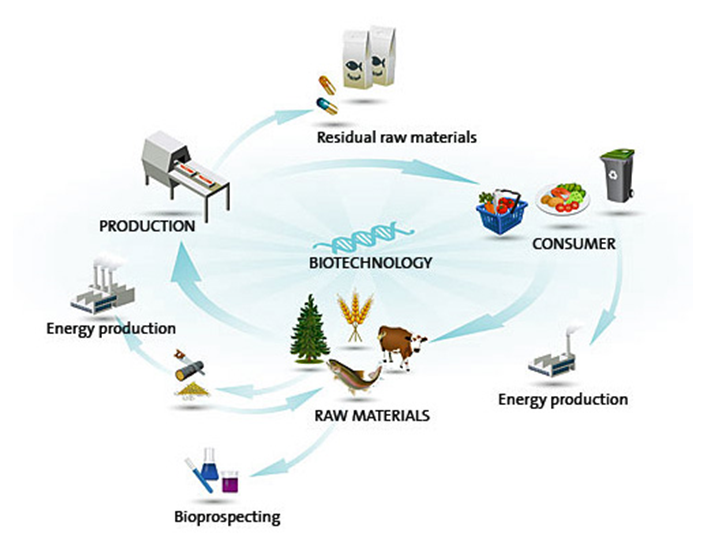R&D’s
bioACTive
bioACTive - Biofarming for bioactive compounds (2021 – 2023)
The objective for the “Bio-farming for bioactive compounds” project is to document that it is possible to reduce fish diseases of farmed salmon, improve poultry gut microbiota and to design biodegradable packaging materials with antimicrobial properties using bioactive compounds from herbs. We have selected 9 Norwegian herbs expected to give high production of bioactive compounds. Growth conditions will be described related to climatic stress and upscaling of production for advanced closed green-house systems, open field, and growth tunnels. Bioactive compounds in herbs will then be extracted, fractionated, and isolated and screened for antioxidant, antimicrobial, anti-inflammatory characteristics. Analytical samples will be characterized by means of targeted and non-targeted metabolomics and in invitro testing.
Effects of additives in fish feed will be examined in invitro test systems, determining antimicrobial activity of extracts, fractions, and isolates of herbs on the growth of Atlantic salmon pathogens. The benefits will be measured as impacts on growth, health, and immunity in fish, and physiological impacts on specific tissues (head kidney, skin, gut, blood). Benefitial effects from extracts as feed additives in poultry feed will be examined by in vitro and in vivo testing. The effects will be documented on anti-oxidant and anti-inflammatoric potential, performance, counts of intestinal pathogens, and microbiota profile. The third application is to design and optimize sustainable methods for incorporation of antimicrobial herb extract into food packaging materials, giving longer shelf life. Different cuttingedge technologies (High pressure processing, ultra-sound, and electrospinning) will be tested for an enhanced incorporation. The project is interdisciplinary, and collaboration and competence dissemination are important goals in the work.
Outcomes:
Find new species of herbs with bioactive compounds for cultivation at Norwegian conditions
Determine which parts of the plants that contain the most active components and methods to extract and
characterize biogenic activity.Stabilization of feed during storage with extracts performing antioxidant properties.
Decreased loss of salmon due to microbial infections (e.g. winter ulcer)
Increased welfare broiler chickens with improved intestinal microbiota
Improvement of biodegradable packaging films with cutting edge technologies (HPP, US, and electrospinning)
Longer term impacts:
Form the basis for a Norwegian herbal industry producing species with high content of biologically active
substances.Reduce the use of antibiotics and synthetic preservatives
Development of innovative packaging materials using in combination with new technologies and natural plant components
The project is financial supported by the Norwegian Research Council (project 320740).
Collaborators
Nofima AS
Skretting Aquaculture research centre AS (Stavanger)
Norgesfôr AS
Frøvoll gård Torleif Todnem
Bosheimsmarken
NIBIO (Norsk Institutt for Bioøkonomi)
Vetrinærinstituttet
PlantChem AS
Petru Poni Institute of macromolecular chemistry (Romania)
Biofresh
Biofresh - Bioeconomic production of fresh greenhouse vegetables in Norway (2016 – 2019)
The project ‘Bioeconomic production of fresh greenhouse vegetables in Norway (BioFresh) (2016-2019)’ will direct focus on future production of greenhouse vegetables in (semi-) closed greenhouses. The main goals are to increase and strengthen interdisciplinary knowledge and competence on (semi-) closed greenhouse production systems, increase food security, intensify production and to stimulate consumption of fresh, safe and healthy high quality vegetables while using natural Norwegian resources.
We have a vision of year-round production without the use of fossil energy, chemical plant protection, and without emissions of CO2, fertilizer or other waste fractions. We want to increase the fraction of fresh and healthy vegetables, while drainage, plant and food waste will be minimized and/or reused. To achieve this, modern equipment for monitoring of plant growth and regulation of greenhouse climate will be developed and tested in a research greenhouse at NIBIO Særheim. Innovation will only occur if new technological developments will give rise to economic and/or environmental value. Both LCA and a recent developed modelling approach, that will be adapted and validated for Norwegian conditions, will be used to quantify these values.
A big part of the funding will be used to educate three PhD/post-doc students, which will strengthen the scientific competence on greenhouse production in Norway. Students will be guided by an experienced team of national and international researchers at NIBIO Særheim in cooperation with University of Stavanger, Nofima Stavanger, PlantChem, NMBU (Ås), Wageningen UR (Netherlands), and Hasselt University (Belgium), ISS Facility Services AS and the Norwegian Growers Association.
Primary and secondary objectives:
The project aims to increase sustainable, resource effective and profitable production and use of fresh, healthy, high quality vegetables. It aims to develop new innovative biological techniques that interact with new technology ((semi-)closed greenhouses) thus dramatically reducing the use of fossil energy, CO2 emissions, use and emissions of mineral fertilizers and chemical plant protection agents.
We aim to:
– Quantify effects of new environmental conditions in (semi-) closed greenhouses on plant growth, production and product quality
– Improve plant performance, productivity and product quality in (semi-)closed greenhouses
– Optimize irrigation techniques
– Develop new techniques for valorisation of organic waste as fertilizer in greenhouse production
– Improve fresh vegetable quality to consumers
– Reduce and valorise waste fractions
– Validate and demonstrate new technologies in relevant environments
– Quantify the economic and environmental value of new technologies



